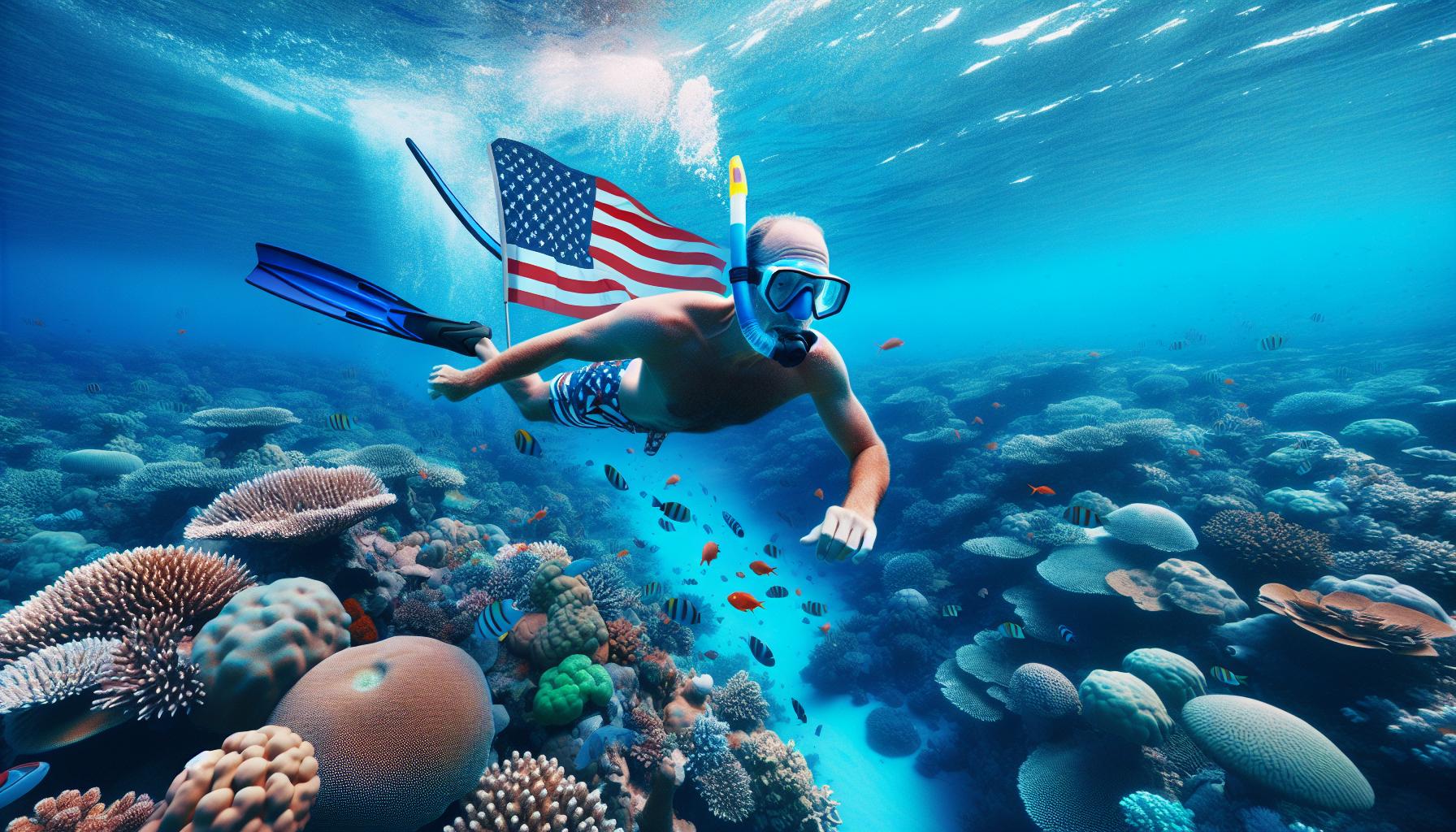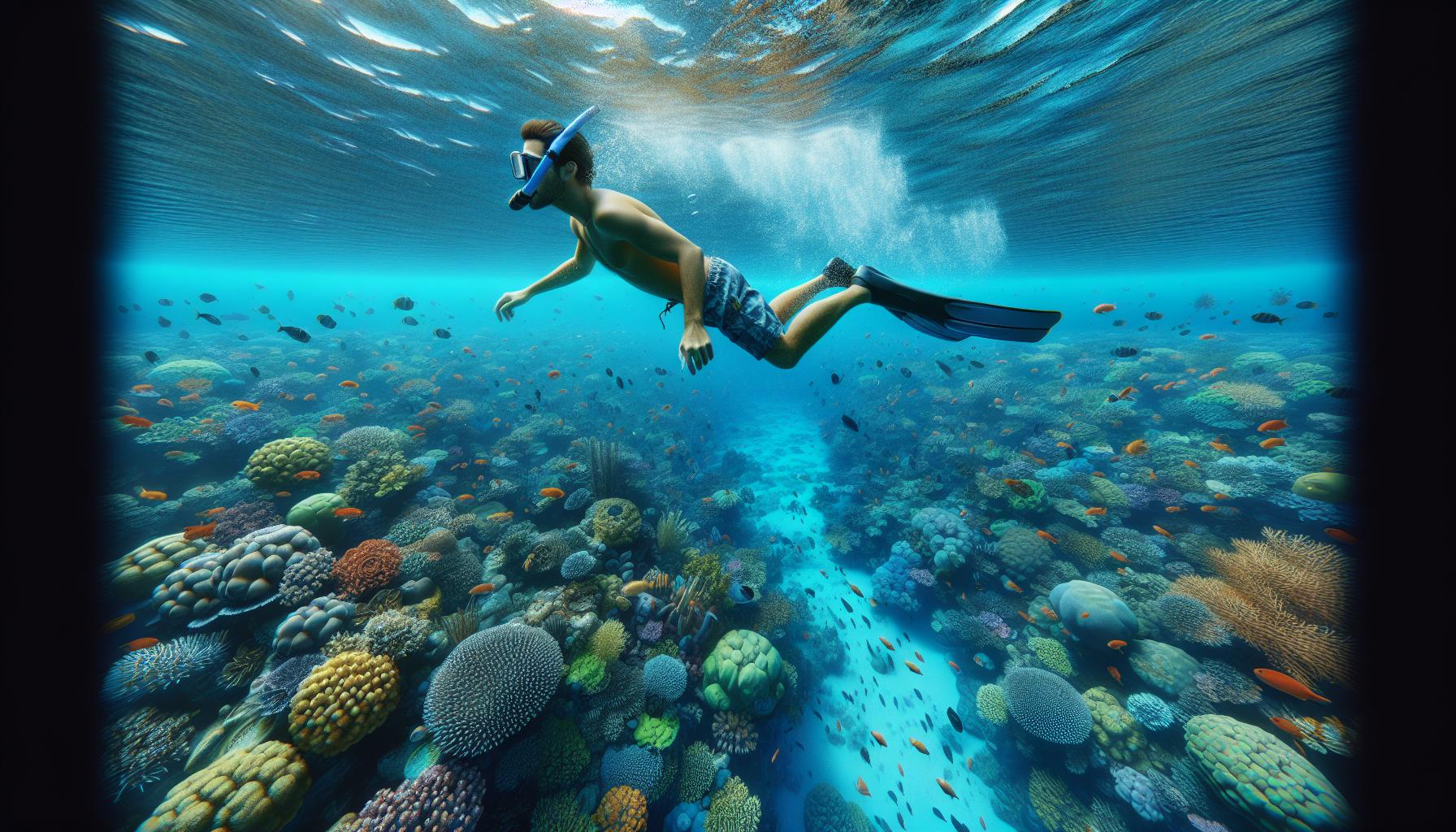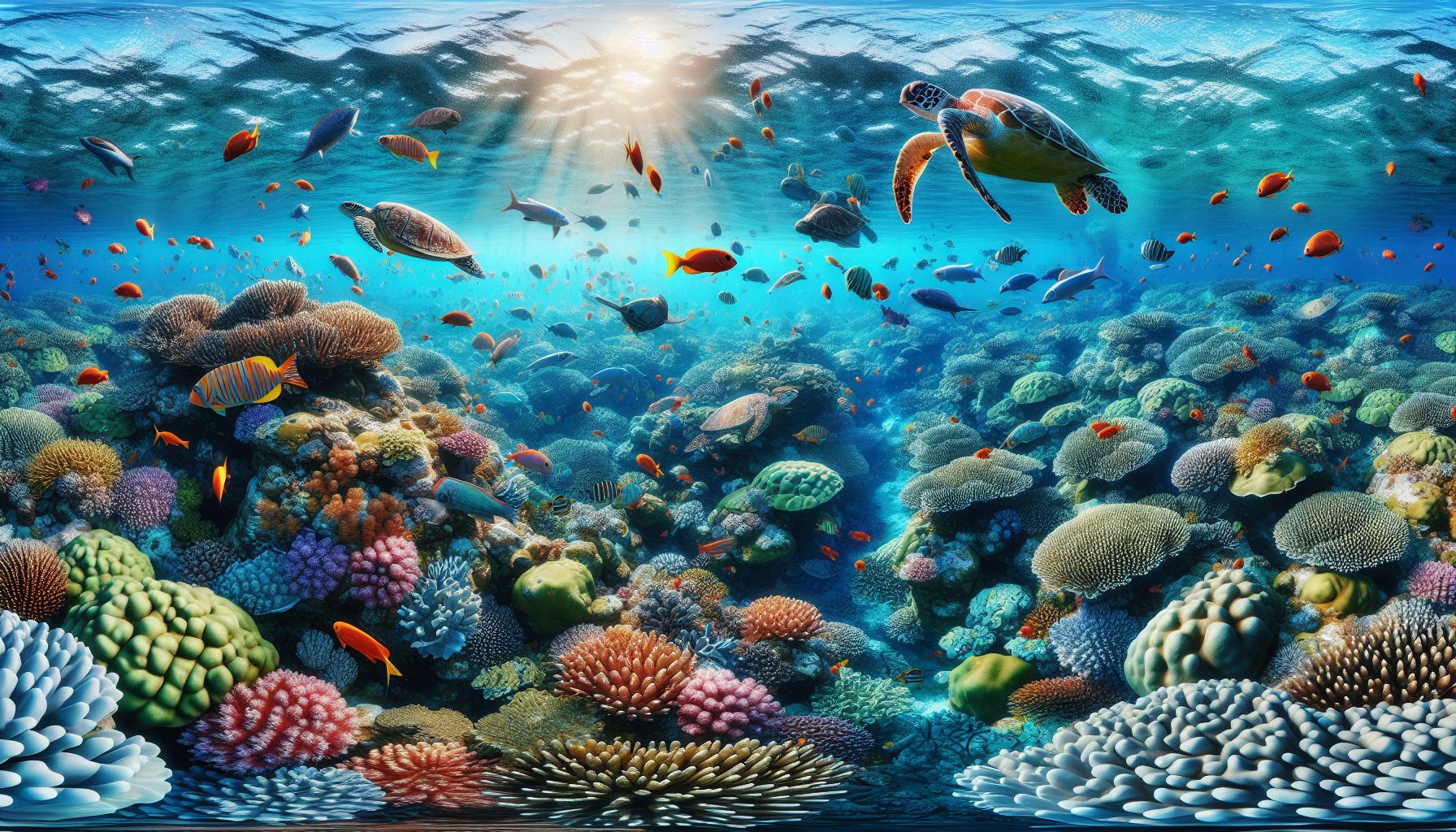Visiting the Great Barrier Reef is like stepping into a vibrant underwater paradise. As one of the world’s most incredible natural wonders, it offers a unique blend of breathtaking beauty and diverse marine life. I’ve always been captivated by its stunning coral formations and the kaleidoscope of colors that dance beneath the waves.
Whether you’re a seasoned diver or just looking to snorkel, this UNESCO World Heritage site promises unforgettable experiences. From swimming alongside playful dolphins to exploring hidden lagoons, every moment spent here feels like a dream come true. Join me as I dive deeper into what makes the Great Barrier Reef a must-visit destination for adventurers and nature lovers alike.
Key Takeaways
- The Great Barrier Reef is a UNESCO World Heritage site, renowned for its stunning biodiversity, consisting of over 1,500 fish species and 400 coral species across approximately 2,900 reefs and 900 islands.
- The best time to visit is from June to October, particularly August and September, ensuring dry weather and excellent underwater visibility for activities like snorkeling and diving.
- Essential items for visitors include reef-safe sunscreen, swimwear, an underwater camera, and snorkeling gear to enhance the experience while minimizing environmental impact.
- Popular activities include snorkeling, scuba diving, and glass-bottom boat tours, catering to various skill levels and providing unforgettable encounters with marine life.
- Conservation efforts are vital for maintaining the reef’s health, and visitors can contribute by using reef-safe products, participating in clean-up drives, and practicing responsible tourism.
- Engaging with local cuisine and culture, such as trying fresh seafood and exploring Indigenous art, enriches the Great Barrier Reef experience while supporting the local community.
Visiting The Great Barrier Reef
The Great Barrier Reef spans over 1,400 miles along the coast of Queensland, Australia. This magnificent natural wonder consists of approximately 2,900 individual reefs and 900 islands. It functions as the largest coral reef system on the planet, providing a diverse habitat for around 1,500 species of fish, 400 species of coral, and numerous marine mammals.
I find it remarkable that the reef’s ecological significance extends beyond its breathtaking beauty. The Great Barrier Reef supports 17 species of seaagulls and over 30 species of whales and dolphins. Its unique ecosystem makes it one of the most biodiverse regions on Earth. The coral formations, composed mainly of calcium carbonate, offer essential environmental benefits by protecting coastlines from erosion and storms.
Visitors enjoy various activities when exploring the Great Barrier Reef. These activities include diving, snorkeling, and glass-bottom boat tours. Each experience allows for intimate encounters with captivating marine life, such as sea turtles, exotic fish, and vibrant coral gardens.
Accessibility to the reef is convenient, with multiple departure points from cities like Cairns and Port Douglas. Tour operators provide guided excursions that cater to different skill levels and interests. The reef attracts millions of visitors annually, contributing significantly to Australia’s tourism revenue while raising awareness about marine conservation.
Planning Your Visit

Planning a visit to the Great Barrier Reef requires careful consideration to enhance the experience. Here are essential details to ensure a rewarding adventure.
Best Time To Visit
The best time to visit the Great Barrier Reef spans from June to October. During these months, weather conditions are generally dry, and visibility underwater remains excellent. I recommend visiting between August and September for optimal marine life interactions and mild temperatures. The summer months, December to February, offer warmth but increase the risk of rain and storms, which can limit activities and visibility.
What To Bring
Bringing the right items ensures a smooth trip to the Great Barrier Reef. Pack the following essentials:
- Swimwear: Quick-drying suits enhance comfort while swimming and snorkeling.
- Sunscreen: Opt for reef-safe sunscreen to protect marine life and prevent skin damage.
- Underwater Camera: Capture breathtaking underwater scenes and marine life encounters.
- Towel: A lightweight, quick-dry towel adds convenience for beach and boat activities.
- Hat and Sunglasses: These protect against sun exposure during outdoor adventures.
- Light Jacket: A light jacket or cover-up is useful for cooler evenings on the water.
- Snorkeling Gear: If you prefer personal gear, consider bringing your own mask and snorkel.
These items contribute to a more enjoyable and comfortable visit to the Great Barrier Reef.
Activities To Enjoy

Numerous activities await at the Great Barrier Reef, each providing unique ways to appreciate this underwater wonderland. Experiences like snorkeling, diving, and boat tours offer unforgettable adventures tailored to every visitor.
Snorkeling And Diving
Snorkeling and diving serve as prime activities at the Great Barrier Reef. I enjoy snorkeling across shallow reefs, gazing at vibrant fish and colorful corals up close. For those seeking a deeper experience, scuba diving offers encounters with larger marine creatures, such as reef sharks and sea turtles. Popular dive sites include the Cod Hole and the famous Yongala wreck. Many operators provide gear rentals, certified instruction, and guided tours. Options exist for all skill levels, ensuring an enjoyable experience whether you’re a beginner or an experienced diver.
Boat Tours And Cruises
Boat tours and cruises present another fantastic way to explore the Great Barrier Reef. I often choose glass-bottom boat tours, which allow me to observe marine life without getting wet. These tours typically include commentary from knowledgeable guides about the reef’s ecology and conservation efforts. For a more immersive experience, sunset cruises offer stunning views of the reef while providing opportunities for dolphin sightings. Additionally, full-day fishing charters cater to those interested in angling, where you can catch species like barramundi and tuna. Flexibility exists with half-day and full-day options to fit any travel itinerary.
Conservation Efforts

Conservation efforts play a crucial role in ensuring the Great Barrier Reef remains vibrant for future generations. Numerous initiatives focus on protecting this natural wonder’s delicate ecosystem.
Importance Of Preserving The Reef
Preserving the Great Barrier Reef is vital for several reasons. The reef supports over 1,500 species of fish and 400 species of coral, which contribute to a balanced marine ecosystem. Maintaining healthy coral formations helps protect coastlines from erosion and enhances biodiversity. Moreover, the reef’s economic significance cannot be overlooked; it generates billions in tourism annually. Efforts to combat climate change, pollution, and overfishing directly impact the reef’s survival. Healthy marine environments rely on intact coral systems, making preservation imperative for ecological stability.
How To Contribute
Individuals can contribute to conservation efforts in various impactful ways:
- Choose Reef-Safe Products: Use reef-safe sunscreens and skincare items to reduce chemical runoff into the ocean.
- Participate in Clean-Up Drives: Join local beach or underwater clean-up events to remove debris harmful to marine life.
- Get Educated: Learn about reef conservation initiatives and support organizations dedicated to protecting marine environments.
- Practice Responsible Tourism: Follow guidelines while visiting the reef, such as not touching coral or marine animals, and avoid collecting souvenirs from the reef.
- Support Sustainable Practices: Opt for eco-friendly tour operators and restaurants that prioritize sustainability in their operations.
By engaging in these practices, I can help protect the Great Barrier Reef and ensure its beauty endures for years to come.
Tips For A Memorable Experience
Exploring the Great Barrier Reef offers not just stunning sights but also rich culture and important safety measures. Here are essential tips for maximizing your visit.
Local Cuisine And Culture
Appreciating local cuisine enhances the Great Barrier Reef experience. Sample fresh seafood dishes, such as barramundi and mud crab, at coastal eateries. Try bush tucker, an Indigenous Australian culinary tradition that showcases native ingredients. Engage with local artists at galleries that feature Aboriginal art, reflecting the cultural history of the region.
Visiting local markets is a great way to discover artisanal products and regional delicacies. Contributing to local businesses supports the community and enhances the overall experience. Participating in cultural tours can also deepen understanding of the Indigenous connection to the land and sea, making your visit more meaningful.
Safety Precautions
Prioritizing safety is crucial when visiting the Great Barrier Reef. Always check and follow guidelines from tour operators regarding marine life interactions and environmental conservation. Wear a life jacket during water activities and stay with the group, particularly when snorkeling or diving.
Use reef-safe sunscreen to protect both your skin and the delicate coral ecosystem. Inform yourself about potential hazards, such as jellyfish and strong currents, especially during “stinger season” from November to May. Staying hydrated and respecting local wildlife ensures a pleasant experience amidst the beauty of the reef.



